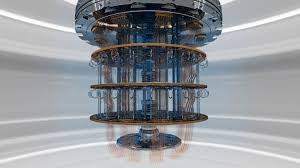Scientists have created the world’s first mechanical qubit: a tiny, dynamic system that stores quantum information using vibrations rather than electric currents or light.
Qubits are the fundamental units of quantum information. Unlike the bits found in classical computers, qubits can exist as 0, 1 or a superposition of both, due to the strange inner workings of quantum mechanics and entanglement.
Traditionally, these superconducting circuits have been made of charged atoms (ions) or light particles (photons). However, the new mechanical qubit uses phonons – a type of “quasiparticle” – generated by vibrations within a precisely engineered sapphire crystal.
A quasiparticle is a concept used to describe the behaviour and interactions of a group of particles as if they were acting as a single particle. In this case, the phonons represent quasiparticles that essentially act as carriers of vibrational energy.
The scientists said the breakthrough could pave the way for ultra-sensitive sensor technologies capable of detecting forces such as gravity, as well as new ways of maintaining long-term stability in quantum computers. They published their study Nov. 14 in the journal Science.
Mechanical systems have historically been considered too challenging to use as qubits because, due to the principles of quantum mechanics, they are never completely stable. This means there is always residual motion that needs to be taken into account and controlled in order to work at the quantum level.
Similarly, mechanical oscillators — devices that store and transfer energy in the form of phonons — are typically subject to harmonic vibrations at equally spaced energy levels. This is an issue, the scientists explained, because the equal spacing makes it difficult to separate the two energy states needed to represent a qubit’s 0 and 1.
“[The challenge] is whether you can spread the energy levels so unevenly that you can address two of them without touching the other one,” study co-author Yiwen Chu, a physicist at ETH Zurich, told Science. The researchers addressed this problem by creating a “hybrid” system that combined a sapphire crystal resonator measuring 400 micrometers (0.4 mm) with a superconducting qubit and tuned the two to interact at slightly offset frequencies.
When the resonator and qubit interact, it mixes up their quantum states, resulting in the resonator having unevenly spaced energy levels — a phenomenon known as “anharmonicity.”
This enabled the researchers to separate the two different energy states, effectively turning the resonator into a mechanical qubit.
While the mechanical qubit can hold and manipulate quantum information, the system’s fidelity – a measure of how accurately it performs quantum operations – was recorded at only 60%. By comparison, state-of-the-art superconducting qubits often achieve fidelity of more than 99%.
Still, the scientists said mechanical qubits could offer unique advantages. For example, they can interact with forces such as gravity in ways that other quantum systems cannot, making them promising candidates for the development of highly sensitive quantum sensors.
They said mechanical qubits may also be able to store quantum information for long periods of time. This is important for maintaining coherence – the measure of how long a system can remain stable and perform calculations using quantum data without interference.
The researchers are now working to connect multiple mechanical qubits together to perform basic computations, which they said would be a key step toward practical applications of the technology.
